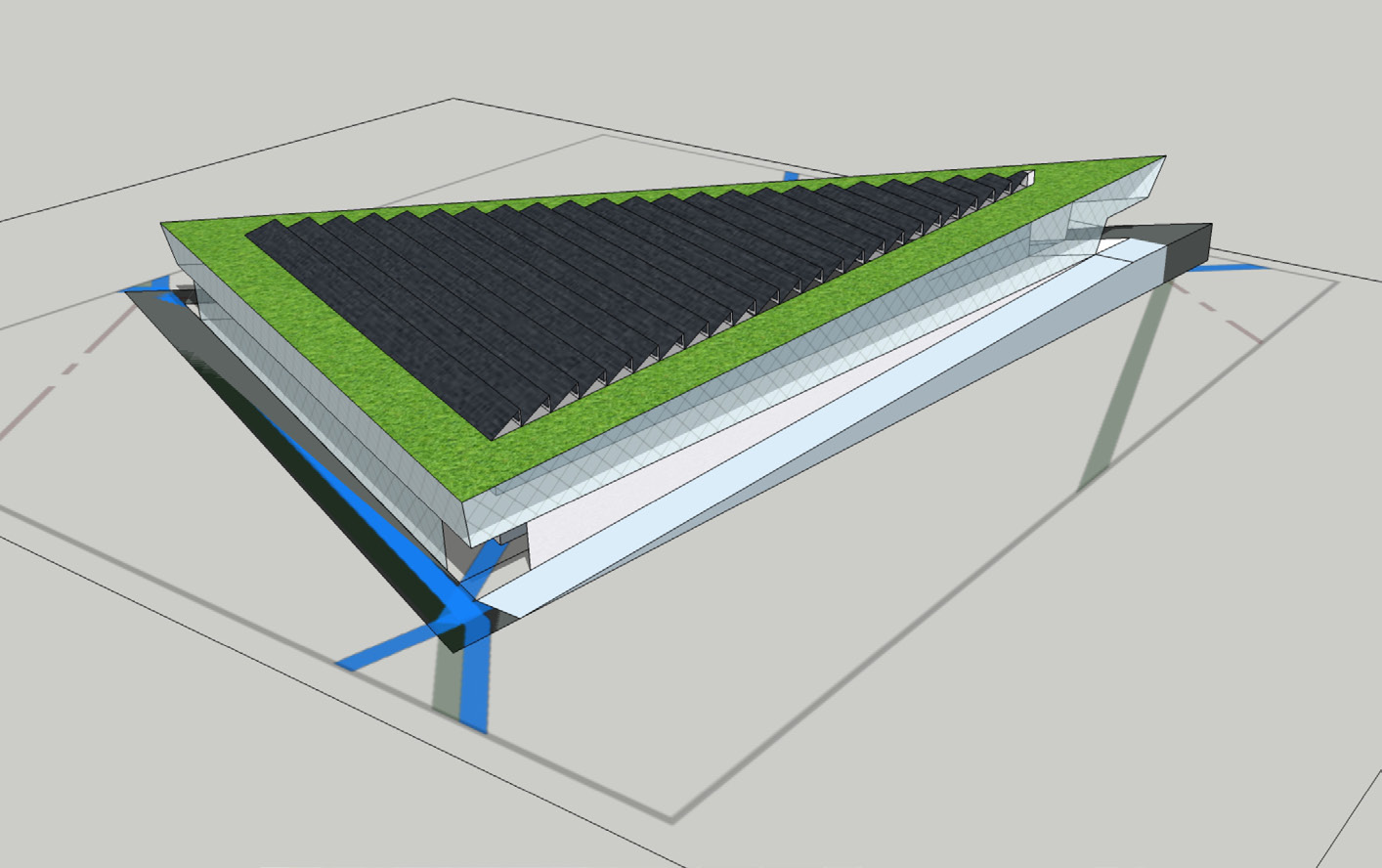In order for Glasgow to create a fairer, low carbon future it needs to invest in its town centre hubsusing a bottom-up strategy. Offering an architectural intervention can foster low-carbon communityled economic growth, introduce a city-grown food infrastructure and showcase the many benefits of arenewable energy future. This proposal explores an interest in how the integration of renewabletechnology and civic architecture can empower the ‘everyday person’ and create more interactionbetween the residents of the town centre community.
The new Maryhill Corridor town centre building and park district will be the core of a new 20-minuteneighbourhood encompassing Kelvinside, Maryhill and Wyndford. The facility will aim to draw in therecreational green spaces around the perimeter of the area and offer opportunities for novel curatedactivated spaces for community interaction both externally and internally. Architecturally, the building will use its electric infrastructure to collect, power, store and share its electric resource as a community commodity, encouraging sustainability while creating opportunities for interpersonal community connections.
Through analysis into what makes 20-minute neighbourhoods successful in cities like Portland, Melbourne and Singapore, I embarked on an architectural proposal for a town centre hub that supports its community’s health, economic and transportation needs. Instead of immediately deciding on a building typology I focused on creating a Manifesto to outline what the architecture sets out to achieve based around two themes: self-reliance and using architecture to connect.
Self-reliance in this situation means that the community is empowered to use the technical and social elements of the town centre hub to improve their lives.Using Architecture to Connect. Bespoke civic facilities that showcase renewable tech and provide opportunities for different groups of the community to meet and exchange information.

